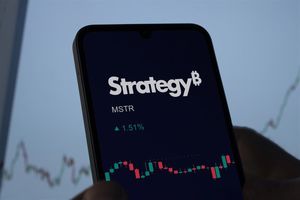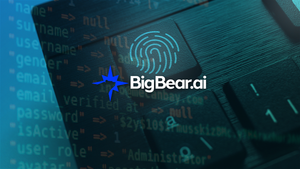
The U.S. stock market is in the midst of a remarkable resurgence, with both the S&P 500 and Nasdaq Composite indices recently achieving unprecedented closing highs. This rally, fueled by a potent combination of cooler-than-expected inflation data, robust corporate earnings—particularly from the technology sector—and the insatiable demand for artificial intelligence (AI), signals a renewed wave of optimism among investors. The immediate implications are a heightened sense of confidence in the market's trajectory, driven by the prospect of easing monetary policy and transformative technological innovation, yet also a growing awareness of elevated valuations and the need for strategic positioning.
This period of record-breaking performance reflects a market grappling with both opportunity and caution. While the headlines celebrate new all-time highs, investors are closely scrutinizing the underlying factors to determine the sustainability of this upward trend and what it means for their portfolios in the coming months.
A Perfect Storm: Cooler Inflation and Tech Triumphs Propel the Market
The recent ascent of the S&P 500 and Nasdaq Composite to new record highs is the culmination of several powerful economic and corporate forces converging. On Wednesday, September 10, 2025, the U.S. Bureau of Labor Statistics delivered a significant catalyst, reporting that the Producer Price Index (PPI) for August unexpectedly dipped by 0.1% month-over-month, confounding economists' forecasts for an increase. Year-over-year, producer price growth eased to 2.6%, well below expectations. This unexpectedly soft inflation data dramatically bolstered investor confidence in imminent interest rate cuts by the U.S. Federal Reserve, with traders now pricing in a high probability of a 25-basis-point reduction at the Fed's September 16-17 policy meeting.
Simultaneously, the technology sector continued its dominant performance, with Oracle Corporation (NYSE: ORCL) delivering "extraordinary" first-quarter fiscal 2026 earnings around September 10, 2025. While revenues marginally missed consensus, the standout was a staggering 359% year-over-year increase in Remaining Performance Obligations (RPO) to $455 billion. This surge was underpinned by several multi-billion-dollar contracts, most notably a monumental $300 billion, five-year cloud computing deal with OpenAI, slated to begin in 2027. This agreement is critical for OpenAI's "Project Stargate" initiative, aimed at building extensive global AI data center infrastructure. Oracle shares responded with a dramatic surge of 31-43%, marking its largest one-day percentage gain since 1992 and briefly propelling co-founder Larry Ellison past Elon Musk as the world's richest person.
This confluence of events painted a bullish picture: cooling inflation suggesting an end to aggressive rate hikes, and robust corporate performance in the most dynamic sector of the economy. The S&P 500 (NYSE: SPX) closed at a record high of 6,532.04 on September 10, 2025, and continued its ascent to an intraday high of 6,572.09 on September 11, 2025. The Nasdaq Composite (NASDAQ: IXIC) similarly reached a new record close of 21,886.06 on September 10, 2025, hitting an intraday high of 22,000.97. Key players involved in this rally include the U.S. Federal Reserve and the Bureau of Labor Statistics for their roles in economic data and policy, and major tech firms like Oracle (NYSE: ORCL), OpenAI, Nvidia (NASDAQ: NVDA), Broadcom (NASDAQ: AVGO), and Advanced Micro Devices (NASDAQ: AMD) for their significant contributions to market sentiment and earnings.
The AI Titans and Energy Providers Reap Rewards, Small Caps Lag
The recent stock market rally has created a clear hierarchy of winners, predominantly centered around the technology and AI ecosystem, while some sectors and companies have struggled to keep pace.
At the forefront of the winners are semiconductor companies and cloud computing providers that form the backbone of the AI revolution. Nvidia (NASDAQ: NVDA), already a dominant force, continues to see immense demand for its AI processors, with its data center sales soaring. Broadcom (NASDAQ: AVGO) also reported a surge in AI revenue and secured a reported $10 billion order for custom processors, believed to be from OpenAI, cementing its role as a key networking gear provider for AI. Advanced Micro Devices (NASDAQ: AMD), Nvidia's main competitor, has also benefited from the overall demand for AI chips. Taiwan Semiconductor Manufacturing (NYSE: TSM), as the world's largest contract chipmaker, saw its shares climb on robust sales figures. Memory manufacturers like Micron Technology (NASDAQ: MU) are benefiting from increased demand for High-Bandwidth Memory (HBM), essential for advanced AI workloads.
Cloud computing giants are also thriving. Oracle (NYSE: ORCL) is a prime example, with its stock surging due to an aggressive outlook for its cloud infrastructure business, significantly bolstered by the $300 billion deal with OpenAI. Microsoft (NASDAQ: MSFT), with its Azure cloud services, continues to be a major beneficiary of AI integration. Companies like Dell Technologies (NYSE: DELL) and Super Micro Computer (NASDAQ: SMCI), which build server systems for data centers, have also seen gains.
Beyond traditional tech, the energy and utility sectors are emerging as unexpected winners. The massive computational demands of AI data centers translate into a colossal appetite for electricity. This surge in power consumption is boosting the prospects for electric utilities such as Constellation Energy (NASDAQ: CEG), Duke Energy (NYSE: DUK), NextEra Energy (NYSE: NEE), and Vistra (NYSE: VST). Renewable energy providers like First Solar (NASDAQ: FSLR) and GE Vernova (NYSE: GEV) are also poised to gain as tech companies seek clean energy sources for their data centers to meet sustainability goals. In the short term, natural gas companies like Chesapeake Energy (NASDAQ: CHK) and ExxonMobil (NYSE: XOM) are also positioned to benefit from increased demand for power generation.
Conversely, small-cap companies have largely underperformed their large-cap counterparts. Represented by indices like the Russell 2000, these firms often have higher exposure to floating-rate debt, making them vulnerable in a "higher-for-longer" interest rate environment. While some strategists anticipate a broadening rally that could eventually uplift small caps, they have not been the primary drivers of the recent market highs. Legacy tech companies and those slow to adapt to the AI paradigm, such as certain segments of Intel (NASDAQ: INTC), may struggle to compete with more agile and AI-focused rivals. The transportation sector, including companies like UPS (NYSE: UPS) and FedEx (NYSE: FDX), has also shown signs of lagging, facing pressure on volume and costs.
AI's Economic Remapping and the Fed's Delicate Dance
The S&P 500 and Nasdaq Composite reaching new highs is not merely a market event; it's a symptom of deeper shifts in the global economic landscape, driven by the pervasive influence of artificial intelligence and the delicate balancing act of central bank policy. This phenomenon underscores broader industry trends, creates significant ripple effects, and carries notable regulatory and historical implications.
The market surge is fundamentally an AI-driven realignment of capital. The extraordinary growth of companies like Oracle (NYSE: ORCL), predicated on its $300 billion cloud deal with OpenAI, exemplifies how massive investments are flowing into AI hardware, cloud infrastructure, and chip design. This trend is not confined to the tech sector alone; the immense power demands of AI data centers are creating a new boom for electric utilities and renewable energy companies, illustrating AI's ripple effect across seemingly disparate industries. This concentration of gains, however, highlights a narrowing market breadth, where the Dow Jones Industrial Average (NYSE: DJI) and more traditional sectors have lagged the AI-heavy S&P 500 and Nasdaq, raising questions about the sustainability and inclusivity of the current rally.
The Federal Reserve's shifting monetary policy is another pivotal factor. The cooler-than-expected Producer Price Index data for August, combined with rising weekly jobless claims, has cemented expectations for interest rate cuts. Traders are now pricing in a high probability of a 25-basis-point cut at the September 16-17 FOMC meeting. While lower rates are generally bullish for equities, some analysts voice concerns that further cuts in an already high-flying market could exacerbate overvaluation and increase the risk of an asset bubble. The long-term efficacy of traditional monetary tools in addressing supply-side issues, potentially stemming from new trade and immigration policies, also remains a point of contention.
From a regulatory perspective, the market's reliance on a few dominant tech giants raises antitrust questions. The sheer scale of deals like Oracle-OpenAI underscores the growing concentration of power and resources in the hands of a few tech behemoths, which could invite greater scrutiny from regulators regarding market competition and data control. Furthermore, trade policies, such as tariffs, are mentioned as potential catalysts for economic optimism, but there are also concerns that these costs could eventually be passed on to consumers, complicating inflation management and potentially leading to a broader economic slowdown if not carefully managed.
Historically, the current market environment draws parallels to the Dot-Com Bubble of the late 1990s, where robust gains in tech stocks were followed by a sharp decline due to overvaluation. The S&P 500's current forward price-to-earnings ratio near its 99th percentile over the past two decades, and its CAPE ratio higher than 95% of its history, indeed signal elevated valuations. However, historical data also suggests that the first Federal Reserve rate cut when the S&P 500 is near an all-time high has often been followed by positive returns in the subsequent year. This indicates that while caution is warranted, current valuations alone do not necessarily predict an immediate downturn. The "September Effect," where U.S. stocks have historically performed poorly in September, presents a seasonal challenge, though heavy tech capital spending and expected Fed easing might mitigate its impact this year.
Navigating the Future: AI's Horizon and the Fed's Next Moves
As the S&P 500 and Nasdaq Composite bask in the glow of new record highs, the market stands at a critical juncture, with both short-term momentum and long-term uncertainties on the horizon. The path forward will be profoundly shaped by the continued evolution of AI and the Federal Reserve's monetary policy decisions.
In the short term, market sentiment remains largely driven by the strong expectation of Federal Reserve interest rate cuts. The cooler PPI data has solidified bets on a September rate cut, which could provide further impetus to the market. However, with valuations at elevated levels—the S&P 500's forward P/E ratio is near its 99th percentile over the last two decades—the risk of a "sell-the-news" event after the initial rate cut is a tangible concern. A narrow breadth in the rally, concentrated in a few mega-cap tech stocks, also suggests potential vulnerability to broader market corrections if the rally does not broaden out more substantially. Investors should prepare for potential volatility as the market digests new economic data and Fed communications.
Long-term possibilities remain cautiously optimistic, with analysts projecting continued earnings per share growth for S&P 500 companies in 2025 and 2026. The transformative power of AI is still in its nascent stages, promising significant economic benefits and driving innovation across various sectors. Companies providing AI tools, infrastructure, and services are poised for sustained growth. However, concerns about an "AI bubble" bursting, similar to the dot-com era, temper this optimism. Geopolitical risks, persistent inflationary pressures, and the potential for an uneven distribution of AI's economic benefits pose ongoing challenges that could affect long-term market stability.
Strategic pivots for investors should include an emphasis on diversification across asset classes and geographies to mitigate risk. Focusing on quality companies with strong fundamentals and sustainable earnings growth will be crucial in an environment of high valuations. Regular portfolio rebalancing and dollar-cost averaging can help manage risk and avoid emotional investment decisions. Furthermore, considering exposure to sectors that directly benefit from AI infrastructure demands, such as certain energy and utility companies, might offer diversification beyond traditional tech plays.
Market opportunities are abundant in the AI ecosystem, from advanced semiconductors to cloud computing and specialized AI software. The potential for Federal Reserve rate cuts could also boost interest-sensitive industries like homebuilding and potentially lead to a weaker U.S. dollar, benefiting U.S. exports and emerging markets. However, challenges include the risk of overheating and asset bubbles in the AI sector, the potential for persistent inflation hindering further rate cuts, and a weakening labor market signaling a broader economic slowdown. Geopolitical tensions and the opaque nature of AI-driven algorithmic trading also introduce systemic risks. The market faces a complex dance between capitalizing on technological innovation and managing macroeconomic headwinds.
Conclusion: A Market at the Crossroads of Innovation and Prudence
The U.S. stock market's journey to new record highs, particularly for the S&P 500 and Nasdaq Composite, marks a pivotal moment in financial history, driven by an intricate blend of technological advancement and evolving economic realities. The key takeaways from this resurgence underscore the profound impact of artificial intelligence and the critical role of central bank policy in shaping investor sentiment.
The rally has been overwhelmingly powered by the AI revolution, funneling immense capital into semiconductor giants like Nvidia (NASDAQ: NVDA), Broadcom (NASDAQ: AVGO), and cloud infrastructure providers such as Oracle (NYSE: ORCL), whose monumental deal with OpenAI serves as a testament to the insatiable demand for AI computing power. Concurrently, the unexpected cooling of producer-price data has fueled strong expectations for Federal Reserve interest rate cuts, acting as a powerful tailwind for equity markets by signaling cheaper borrowing costs and a more favorable economic environment. This confluence has fostered a robust, albeit somewhat narrowly focused, market optimism.
Moving forward, the market is poised at a crossroads. While the underlying corporate earnings, especially from the tech sector, remain strong, and the prospect of a "soft landing" for the economy appears increasingly plausible, the specter of elevated valuations cannot be ignored. The S&P 500's current valuation metrics place it at historical highs, suggesting a need for caution despite the bullish momentum. The market's ability to sustain these highs will largely depend on a continued broadening of the rally beyond mega-cap tech, consistent corporate earnings growth, and the Federal Reserve's adept navigation of monetary policy.
The lasting impact of this period will likely be defined by the acceleration of AI integration across all industries, fundamentally reshaping business models and creating new avenues for growth and investment. However, it also highlights the growing divide between companies that successfully harness AI and those that lag, further polarizing market performance. For investors, this era calls for a strategic blend of opportunism and prudence.
In the coming months, investors should vigilantly watch for several key indicators: the Federal Reserve's actual rate decisions and accompanying guidance, which could either validate or challenge current market expectations; further inflation data (both CPI and PPI) to gauge the effectiveness of disinflationary trends; and corporate earnings reports for insights into how companies are leveraging AI for productivity and revenue growth. While the allure of AI-driven gains is strong, a diversified approach, focusing on quality companies with strong fundamentals, will be paramount in navigating potential volatility and ensuring long-term portfolio resilience. The market's dance between innovation and monetary policy will continue to dictate its rhythm, offering both exhilarating highs and the potential for challenging pivots.






